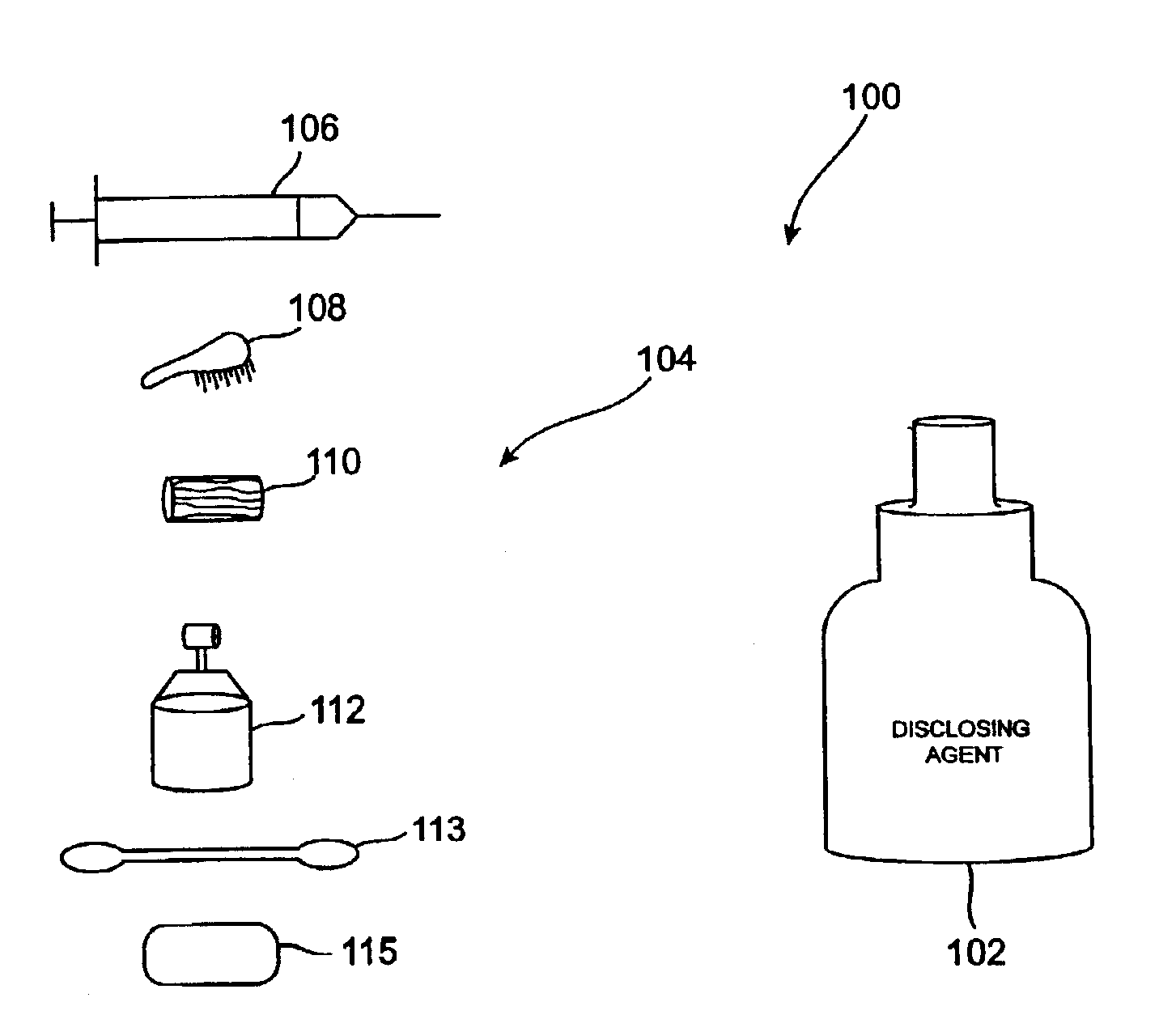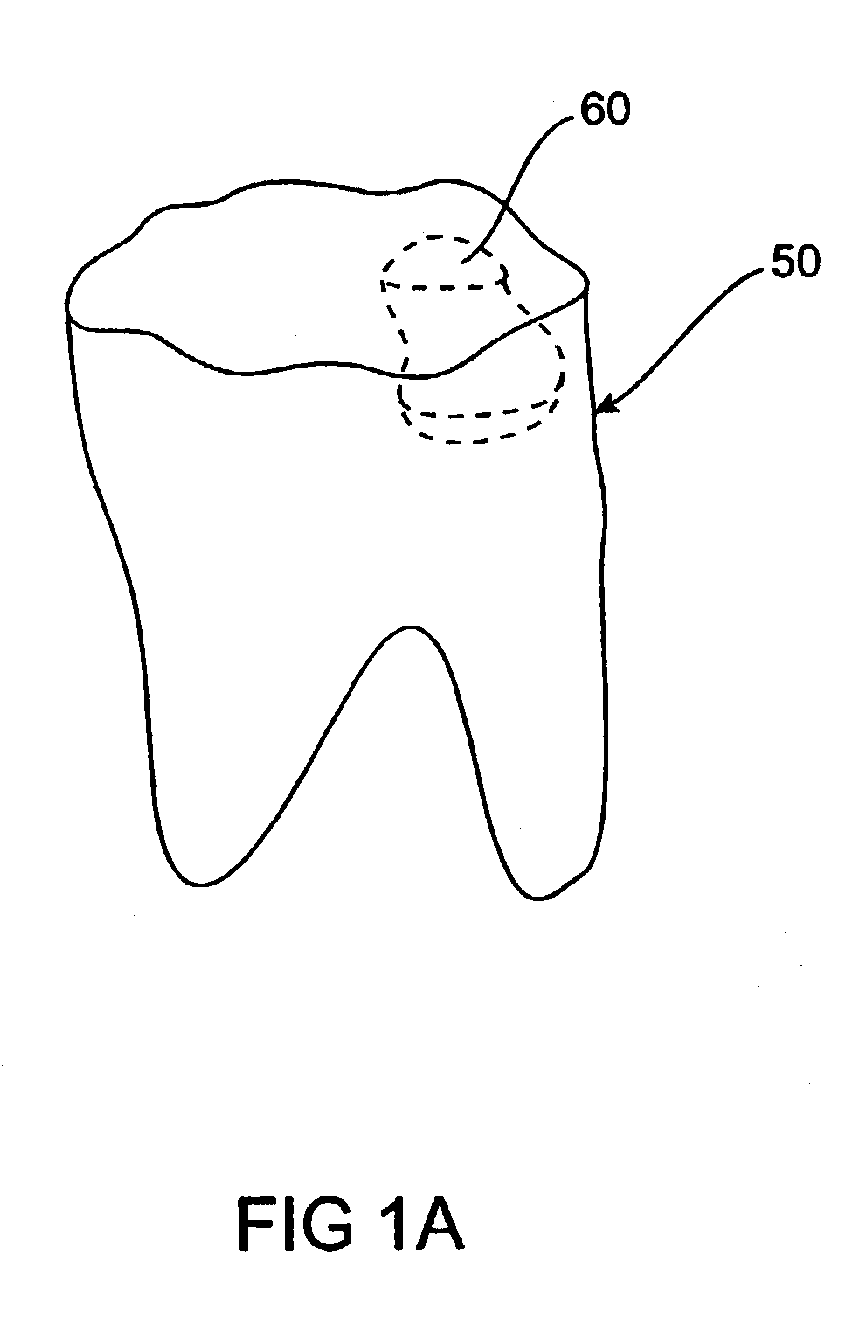Method and system for selectively staining dental composite resin
a composite resin and selective staining technology, applied in the field of dental techniques, can solve the problems of prior art techniques proposed to repair and replace fillings that are disadvantageous in many respects, damage to fillings, repair or replacement,
- Summary
- Abstract
- Description
- Claims
- Application Information
AI Technical Summary
Benefits of technology
Problems solved by technology
Method used
Image
Examples
Embodiment Construction
[0035]The methods and systems for selectively staining dental composite materials in accordance with the present invention are now described. The present invention relates to a new, innovative technique to greatly improve and advance restorative techniques for the treatment of, for example, tooth decay and resulting cavities in teeth. As one example, the methods and systems of the present invention overcome disadvantages associated with the repair or replacement of composite fillings in the prior art. As another example, the present invention allows for the identification of the precise location of a composite material in a tooth to facilitate repair or replacement of the composite material.
[0036]FIG. 1A illustrates a tooth 50 having a composite material 60. In one embodiment of the present invention, the tooth 50 can be any tooth of a person. In another embodiment of the present invention, the tooth 50 could be the tooth of a non-human entity. In one embodiment of the present inven...
PUM
| Property | Measurement | Unit |
|---|---|---|
| hydrophobic | aaaaa | aaaaa |
| tooth structure | aaaaa | aaaaa |
| structure | aaaaa | aaaaa |
Abstract
Description
Claims
Application Information
 Login to View More
Login to View More - R&D
- Intellectual Property
- Life Sciences
- Materials
- Tech Scout
- Unparalleled Data Quality
- Higher Quality Content
- 60% Fewer Hallucinations
Browse by: Latest US Patents, China's latest patents, Technical Efficacy Thesaurus, Application Domain, Technology Topic, Popular Technical Reports.
© 2025 PatSnap. All rights reserved.Legal|Privacy policy|Modern Slavery Act Transparency Statement|Sitemap|About US| Contact US: help@patsnap.com



